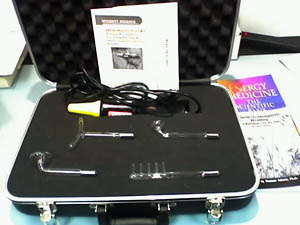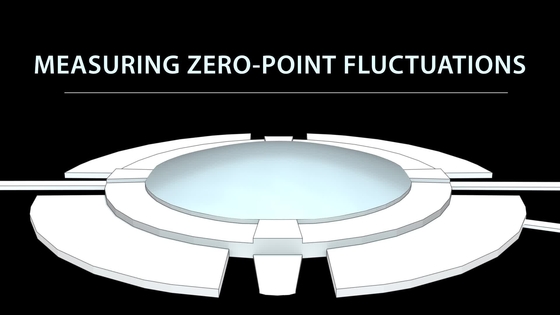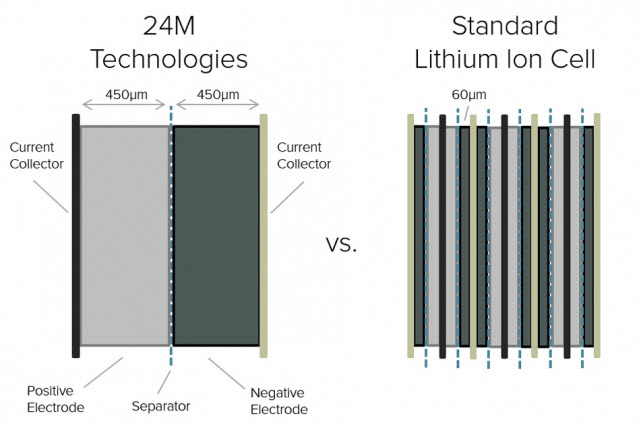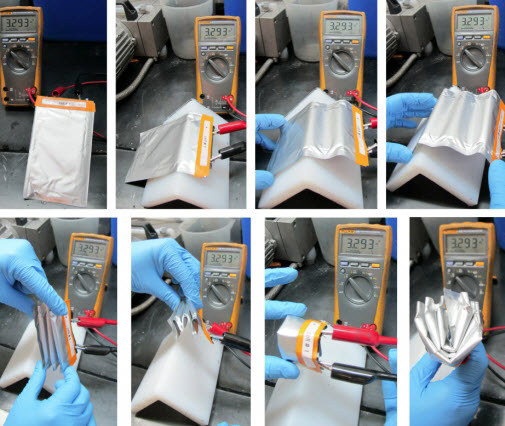|
|
As we prepare
to begin our Seventh Conference on Future Energy in
Albuquerque NM this midweek coming up, the local NBC-  affiliate KOB-TV has agreed to send a couple of
reporters to the conference since we have breakthrough energy
presentations. We also are admitting ALL young people between 15-25
years old for FREE to COFE7 in order to help a few students who may
take advantage of this great educational opportunity. My presentation at COFE7 this year, we be
on Wednesday at 5:00 pm will focus on the "Spiral Permanent Magnet Motor which this month just received
an honorary recognition for a 400 download milestone on www.researchgate.net . It is my most popular
published paper. affiliate KOB-TV has agreed to send a couple of
reporters to the conference since we have breakthrough energy
presentations. We also are admitting ALL young people between 15-25
years old for FREE to COFE7 in order to help a few students who may
take advantage of this great educational opportunity. My presentation at COFE7 this year, we be
on Wednesday at 5:00 pm will focus on the "Spiral Permanent Magnet Motor which this month just received
an honorary recognition for a 400 download milestone on www.researchgate.net . It is my most popular
published paper.
Though we have reported on Energy Harvesting in many
previous Future Energy eNews articles, the latest is an industrial
report just released on July 23, 2015 which costs about $5000 for 1-5
viewers! However, it probably is the most comprehensive report ever
assembled http://www.energyharvestingjournal.com/.
Our Story #1 is on one of my favorite topics, getting up
close and personal with measuring zero-point energy fluctuations as
reported by the prestigious science network, Phys.org. Click on the
picture to see the video. Quite exciting to see something which never
is truly at rest. Now physicists are amplifying "noisy" ZPE
fluctuations to vibrate a drum. Free energy harvesting anyone? If you
can measure it, anyone can use the signal with a rectifier for a
useful energy output but the team is simply measuring it at this
time.
Story #2 is a far out concept for laser fusion combined
with a fission hybrid jet propulsion system with deuterium and
tritium with a little bit of U-238 for more heat. Leave it to Boeing
to find funds for this futuristic approach to propulsion. We at IRI are
more excited about inertial propulsion which relies on a simple
gyroscopic motion that rectifies centrifugal force, also developed by
Boeing and about a 100 other patentees in the IRI Inertial Propulsion
Patent Collection. See Mike Gamble's presentation on Friday, July 31 at COFE7 for more
information on this already-developed propulsion method.
Story #3 looks at cutting lithium-ion battery costs in
half, which is a great breakthrough. MIT has come up with a new
two-layered design which simplifies manufacturing with a
spinoff company called 24M.
Story #4 is an interesting change for us: a global
energy market business report by Bloomberg. It predicts the upsurge
of renewables, especially solar, along with other flexible capacity
and a decline of fossil fuels by 2040.
Story #5 is a great article for those into wearable
electrical clothing products. With global warming coming our way and
even Shell corporation admitting this month that it is preparing for
a 4C (7F) degree change by 2050 or so, what better way to get ready
for the heat than to simply cool your clothes as you continue to burn
through all the coal, oil, and natural gas you can buy? Hopefully,
that is not everyone's thinking but it is nice to know this new
clothing product by ApplySci also creates an environmental energy
savings by adapting the thickness of a fabric to the outside
temperature. This product will therefore allow a person to use less
energy-intensive heating or cooling as a result.
Onward
and Upward,
Sincerely,
Integrity Research Institute
|
|
|
OUR LATEST CONFERENCE
COFE7
JULY 30-AUG 1, 2015
ALBUQUERQUE , NM


Osteoporosis? Our Newest Item
OsteoPad

EM
Pulser
Our best selling PEMF device

PREMIER
Jr.
Our best selling Tesla coil device

|
|
|
1) ZERO POINT FLUCTUATIONS RESOLVED
|
By
Raymond Simmonds, July 5, 2015 Phys.org
http://phys.org/news/2015-07-quantum-fluctuations.html

CLICK ON PICTURE TO SEE VIDEO.
In this universe, anything that can vibrate will
vibrate, and no oscillator is ever truly at rest.
Even
when an object such as an atom or subatomic particle is cooled into
its lowest possible energy condition, or "ground state," it still
experiences random fluctuations in its
position and momentum thanks to the Heisenberg uncertainty principle:
The better defined the position is, the more uncertain the momentum,
and vice versa.
In
short, it's impossible to be motionless. This is not just true on the
atomic scale, but also for extremely small, yet still macroscopic
objects containing billions of atoms.
These
fluctuations are very difficult to detect by conventional means
because traditional linear amplification techniques always add some
classical noise that can masquerade as "quantum fluctuations." Worse yet,
trying to directly measure the energy of these fluctuations is
impossible because this so-called "zero-point energy"
cannot do any real work - that is, exert a force to move an
object-making it in some sense "unreal."
Now
Ray Simmonds and colleagues in NIST's Quantum Devices Group have
devised and demonstrated a unique measurement system that is able to
resolve quantum fluctuations of a tiny aluminum drum that vibrates at
shortwave radio frequencies.
The
system, which fits on a microchip, comprises three elements: the
drumhead mechanical resonator; an attached
inductor coil (which, combined with the drum element, functions as a
microwave "cavity"-a structure that electrically resonates
at about 10 GHz); and an electrically coupled "artificial atom" made from a
superconducting Josephson junction (a tiny metal-insulator-metal
sandwich).
Previously,
the NIST researchers had worked extensively with the drum-and-coil
cavity (an "optomechanical" combination) exploring how to
cool the mechanical motion to its ground state and how to
mechanically store or transfer information. The latest work, reported
in Nature Physics, adds the artificial atom circuit, providing an
ultra-sensitive detector of individual microwave photons trapped
inside the electrical cavity.
Using
the artificial atom as a new measurement resource, the researchers
performed two important, separate tests on the optomechanical system
in order to convincingly show the presence of the zero-point
fluctuations of the mechanical resonator.
First,
they wanted to confirm that the mechanical resonator could be cooled
to its ground state by showing that, in this state, it is impossible
to remove energy from it. This involves the ability to exchange or
"swap" energy back and forth between the mechanical phonons
(quantized vibrations) and the photons of microwave light in the
cavity. Next, they used a technique known as "parametric
amplification" in order to amplify the zero-point fluctuations,
which in turn altered the dimensions of the cavity, making the
fluctuations "real" and affecting the cavity photons
detectable by the artificial atom.
Both
the swap and amplification processes are achieved through a coherent
pumping of microwave radiation into the inductor coil of the
optomechanical system. (See animation.) These processes originate
from the fact that when the mechanical drum vibrates, its motion
changes the resonant frequency of the electrical cavity.
Like
FM radio, the motion of the drumhead is encoded in the changing
frequency of the electrical cavity's tone. Pumping the system at a
frequency below the resonance of the cavity by an amount equal to the
mechanical vibration frequency produces the swap process, while
pumping a mechanical frequency above the cavity resonance provides
the amplification process.
Before
performing these two experiments, the researchers tested the
artificial atom measurement strategy, by creating known amounts of
energy within the electrical cavity and reading those out using the
artificial atom. This allowed them to characterize not only a
coherent input of energy (basic oscillatory motion with a
well-defined amplitude and phase) but also a noisy amount of energy
-random amplitude and phase, equivalent to thermal heating. That
distinction provided a way to differentiate between coherence and
random fluctuations.
For
each experiment, the researchers began by using the cold electrical
cavity (precooled by a liquid helium refrigerator to 25 mK) to cool
the mechanical drum's motion to nearly its quantum ground state using
previously established techniques. After swapping the mechanical
phonons for electrical photons, they used the artificial atom to
verify that there was below a single phonon (0.25 on average) in the
mechanics.
For
the second test, a parametric pump tone is turned on in order to
amplify any motion in the mechanical drum. Simmonds described it like
this, "The parametric amplification process adds more photons to
the cavity and more phonons to the mechanics proportional to how many
phonons started in the drum, even if those phonons are coming from
noisy quantum fluctuations. After the pump is on for a little while,
these real photons fill the cavity and look like excess heat that can
be measured by the artificial atom."
Every
amplification process has a "gain" or the multiplicative
amount by which the number of photons and phonons is increased from
their initial value. The team's Florent Lecocq, who fabricated the
chip and performed the experiments, put it this way,
"Classically, if nothing is there to begin with, then any number
(or gain) times zero is still zero. Even a large gain cannot reveal
what's not there. But, due to quantum physics, as Heisenberg realized
long ago, this strange, incessant random motion must persist, and
this can be amplified."
The
researchers determined the gain of their system by amplifying a known
amount of coherent motion. After amplifying the system from its
ground state, they divide the result by their known gain and thereby
reveal that there must have been exactly one quantum of zero-point
fluctuations to begin with.
The
same system, with modifications, could be used in reverse: The
artificial atom could generate specific phonon states on-demand. It
could also be employed to explore the quantum dynamics of the
mechanical oscillator, or to generate quantum entanglement between
phonons and photons.
"Controlling
the quantum states of long-lived mechanical oscillators is important
for testing these kinds of fundamental, natural properties, like
quantum mechanics. A system like this may also become a resource for
applications in quantum information," Simmonds says, "and,
as demonstrated here, it provides us with a new, powerful, quantum-enhanced
platform for developing new detection methods for unbeatable
precision measurements."
 Explore
further: Mechanical micro-drum cooled to quantum ground
state Explore
further: Mechanical micro-drum cooled to quantum ground
state
More
information: Resolving the vacuum fluctuations of an
optomechanical system using an artificial atom," F. Lecocq, J.
D. Teufel, J. Aumentado & R. W. Simmonds, published
on-line in Nature Physics. June 15, 2015. DOI: 10.1038/nphys3365
|
2) Boeing and NASA's Fusion-Fission Hybrid Jet
Propulsion Systems
|
By
Next Big Future, July 13, 2015
http://nextbigfuture.com/2015/07/boeings-fusion-fission-hybrid.html
Boeing has a patent for a laser fusion -
fission hybrid jet propulsion system.
Boeing
claims energy-efficient thrust can be produced by firing lasers at
deuterium and tritium and then having the neutrons activate uranium
238 to generate more heat.

*
Hot gases produced by the laser induced fusion are pushed out of a
nozzle at the back of the engine, creating thrust.
* a neutrons hit a shell of uranium 238 which causes fission and
generates lots of heat
* a heat exchanger uses the heat from the fission reaction to drive a
turbine that generates the electricity that powers the lasers
They have different configurations
* one configuration generates ISP of about 2000 to 5000 seconds
* another configuration has an ISP of about 5000 to 25000 seconds
* another configuration an ISP of about 100,000 to 250,000.
I am not sure where there is enough innovation in the Boeing concepts
for a patent. There have been several prior proposed fusion-fission
hybrid propulsion systems.
I look at some other work and focus on the NIAC NASA Pulsed
Fission-Fusion design. There is a lot more detailed modeling and work
towards experimentation in the NASA Pulsed Fission-fusion
design.
Other fusion-fission hybrid propulsion work and pure
laser fusion work
Ted Kammash, Ricky Tang and Michael Hartman had a bi-modal fusion
propulsion system in which Q-values of about unity or less are needed
since the GDM will serve mainly as a neutron source. It is well known
that fusion reactions are neutron rich but energy poor, while fission
reactions are energy rich but neutron poor. We make use of this fact
by considering a system in which the GDM device serves as a fast
neutron source surrounded by a blanket of Th232 , which we utilize to
breed U233 and simultaneously burn it to produce energy. For a
reasonable size blanket and a D-T plasma density, size and
temperature, we find that the proposed hybrid system is capable of
producing tens of gigawatts of thermal power per centimeter. If we
use this power to heat a hydrogen propellant, we find that a seven
meter long engine can generate a specific impulse of about 59,000
seconds at a thrust of about 8 mega-newtons at a propellant flow rate
of about 130 kg/sec. Such a propulsion capability would allow many
meaningful space missions to be carried out in relatively short
times. Furthermore, such a hybrid system can generate large amounts
of electric power for surface power applications once destination is
reached.
The use of fusion energy to propel vehicles in space has been investigated
for several decades. Much of the earlier work focused on inertial
fusion where laser beams are employed to ignite target pellets
containing fusion fuel to produce the needed energy. With the
realization that laser systems are massive and complicated, other
drivers were examined to see if they can deliver the required energy
to the target at much lower mass. Here, the use of antimatter was
found to be especially effective. Modest amounts of antiprotons are
found to be adequate to trigger fusion propulsion but the engineering
challenges associated with this approach6 have to be addressed
vigorously in order for it to be realizable. The major issue
associated with the use of antimatter is availability since the
current annual worldwide production rate stands at nanograms while
most fusion propulsion schemes appear to require quantities on the
order of several micrograms. With the world effort in achieving
fusion power for terrestrial use focused on toroidal devices, such as
tokamaks, very little attention was paid to magnetic fusion for
propulsion applications.
These
devices do not appear to lend themselves geometrically for exhausting
energetic plasma particles to generate thrust. Open-ended magnetic
devices, on the other hand, are found to be especially suitable
because they can confine a plasma long enough to be heated before
being ejected from one of the mirror ends to produce thrust. Of
particular advantage in this regard is the gasdynamic mirror (GDM)
whose confinement properties are based on plasmas of such density and
temperature as to make the ion-ion collision mean free path much
shorter than the length. Under these conditions, the plasma behaves
much like a fluid, and its escape from the system is analogous to the
flow of a gas from a vessel with a hole. We focus on the GDM as the
fusion component of the system we propose in this paper and
demonstrate its usefulness for both space power and propulsion
applications.
Kammash, Terry, Tang, Ricky and Hartman, Michael,
"Fusion-Fission Hybrid Revisited - Potential for Space
Applications", AIAA 2009.
Hyde, R. A., Wood, L., and Nuckolls, J., "Prospects for Rocket
Propulsion with Laser-Induced Fusion Microexplosions," 8th
Joint Propulsion Specialist Conference, New Orleans, LA, 1972,
AIAA-1972-1063.
Martin, A. R., and Bond, A., "Project Daedalus," Journal of
the British Interplanetary Society, Supplement Volume, 1978.
Kammash, T., and Galbraith, D. L., "A Fusion Reactor for Space
Applications," Fusion Technology, Vol. 12, No. 11, 1987
NASA
Rob Adams talks about fusion propulsion and hybrid pulsed fission
fusion propulsion
NASA Scientist Dr Rob Adams speaks about Pulsed Fusion Propulsion,
dense plasma focus fusion, z pinch fusion and the possibilities of
high density compression of fusion fuels.
NAIC - Pulsed Fission-Fusion (PuFF) Propulsion System
Fission-ignited fusion systems have been operational - in weapon form
- since the 1950's. Leveraging insights gained from the weapons
physics program, a Z-Pinch device could be used to ignite a
thermonuclear deuterium trigger. The fusion neutrons will induce
fission reaction in a surrounding uranium or thorium liner, releasing
sufficient energy to further confine and heat the fusion plasma. The
combined energy release from fission and fusion would then be
directed using a magnetic nozzle to produce useful thrust. This type
of concept could provide the efficiency of open cycle fusion
propulsion devices with the relative small size and simplicity of
fission systems; and would provide a radical improvement in our
ability to explore destinations across the solar system and beyond.
This proposal is modified version of last year's proposal -
addressing issues raised during that evaluation.
 PUFF
hybrid vehicle design and mission analysis showed concepts which
could reach Mars in 37 days, and 1,000 astronomical unit (AU)
interstellar precursor distances in 36 years PUFF
hybrid vehicle design and mission analysis showed concepts which
could reach Mars in 37 days, and 1,000 astronomical unit (AU)
interstellar precursor distances in 36 years
phase 1 proposal included modeling the above process first under
steady state assumptions and second under a time variant integration.
We proposed including these results into a Mars concept vehicle and
finally proposing promising conditions to be evaluated experimentally
in Phase II. In phase I we quickly realized that we needed to modify
our approach. Our steady state work was completed as proposed, and
the results indicated that one, a two stage compression system was
not needed and two, that we wanted to move away from UF6. The steady
state model shows much more margin than expected, to the point that
we may well reach breakeven with the Charger - 1 facility, a 572 kJ
Marx bank currently under refurbishment at UAH. Additionally we found
that using gaseous D-T and UF6, provided a relatively simple prospect
of using a pulsed injector, made reaching criticality more difficult.
The introduction of large amounts of fluorine meant a radiative sink,
sapping power from the fusion plasma and was harder to handle.
Therefore we moved to a solid uranium target that held D-T under
pressure. In so doing we could move our target closer to criticality
and remove any material that did not sustain the reaction.
However
in moving to a solid target we complicated our time-variant model,
now requiring us to develop phase change algorithms and stress-strain
calculations for the solid matrix. We have continued efforts along
this line but as expected we did not complete this model. After
discussions with NIAC management we moved some of our resources to
preparing existing equipment to support an experimental program
testing various target configurations under a variety of z-pinches at
different power levels. Contained in this report are our results
preparing 200 J, 1kJ and 4-8 kJ pulsed power systems as well as a
vacuum chamber and diagnostic equipment to evaluate generated
plasmas.
We have also completed a point design of PuFF using the results of
our steady state model. This design was then used to evaluate a
couple missions of interest. At the behest of NIAC management we
considered a more advanced version of the Mars mission, resulting in
a vehicle that could reach Mars, one way, in 37 days with 25 mT of
payload.
Long Range Plans
* NIAC Phase II
* Complete Charger 1 refurb
* Ignite PuFF plasma
* Continue magnetic nozzle research
* Charger II
* Construct breadboard PuFF system capable of 10-20 Hz operation
- Upgrade to flightweight hardware - NASA
- Optimize pulse for maximum power output - DOE
- Astrodynamics, radiation protection, other research goals - Various
SOURCES - US Patent, Youtube, NASA, NIAC, Rob Adams
Author: brian wang on 7/13/2015
back to table of contents
|
3) Improved
Lithium Battery
|
 Researchers at MIT and spinoff
company 24M have developed an advanced manufacturing approach for
rechargeable lithium-ion batteries. The researchers claim the new
process could cut the manufacturing and materials cost in half
compared to existing lithium-ion batteries, while also improving
their performance, making them easier to recycle as well as flexible
and resistant to damage. Researchers at MIT and spinoff
company 24M have developed an advanced manufacturing approach for
rechargeable lithium-ion batteries. The researchers claim the new
process could cut the manufacturing and materials cost in half
compared to existing lithium-ion batteries, while also improving
their performance, making them easier to recycle as well as flexible
and resistant to damage.
"We've reinvented
the process," says Yet-Ming Chiang, the Kyocera Professor of
Ceramics at MIT and a co-founder of 24M (and previously a co-founder
of battery company A123). The existing process for manufacturing
lithium-ion batteries, he says, has hardly changed in the two decades
since the technology was invented, and is inefficient, with more
steps and components than are really needed.
By 2020, Chiang
estimates, 24M will be able to produce batteries for less than $100
per kilowatt-hour of capacity - considered the threshold for mass
adoption of electric vehicles, according to most analysts within the
EV industry, Clean Technica notes, adding that the planned Tesla
Gigafactory 1 also hopes to hit that figure by 2017.
Today, the estimates of
battery costs range wildly between $300 per kilowatt-hour and $500
per kilowatt-hour, notes The Wall Street Journal. Because the battery
is the most expensive part of an electric car, like the Tesla Model S
or the forthcoming Chevrolet Bolt, lowering the cost of the battery
significantly could have a big impact."
A "semisolid"
battery
The new process is a
hybrid between a conventional solid battery and a "flow
battery" design, in which the electrodes are actually
suspensions of tiny particles carried by a liquid and pumped through
various compartments of the battery. The flow battery was developed
five years ago by Chiang and colleagues including W. Craig Carter,
the MIT POSCO Professor of Materials Science and Engineering.
In this new version,
while the electrode material does not flow, it is composed of a
similar semisolid, colloidal suspension of particles. Chiang and
Carter refer to this as a "semisolid battery."
This approach greatly
simplifies manufacturing, and also makes batteries that are flexible
and resistant to damage, says Chiang, who is senior author of a paper
on the new battery design in the Journal of Power Sources. This
analysis demonstrates that while a flow-battery system is appropriate
for battery chemistries with a low energy density (those that can
only store a limited amount of energy for a given weight), for
high-energy-density devices such as lithium-ion batteries, the extra
complexity and components of a flow system would add unnecessary
extra cost.
Almost immediately
after publishing the earlier research on the flow battery, Chiang
says, "We realized that a better way to make use of this
flowable electrode technology was to reinvent the [lithium ion]
manufacturing process."
Instead of the standard
method of applying liqquid coatings to a roll of backing material,
and then having to wait for that material to dry before it can move
to the next manufacturing step, the new process keeps the electrode
material in a liquid state and requires no drying stage at all. Using
fewer, thicker electrodes, the system reduces the conventional
battery architecture's number of distinct layers, as well as the
amount of nonfunctional material in the structure, by 80 percent.
Having the electrode in
the form of tiny suspended particles instead of consolidated slabs
greatly reduces the path length for charged particles as they move
through the material - a property known as "tortuosity." A
less tortuous path makes it possible to use thicker electrodes, which,
in turn, simplifies production and lowers cost.
Bendable and foldable

The new design also
produces a battery that is more flexible and resilient. Conventional
lithium-ion batteries are composed of brittle electrodes that can
crack under stress; the new design produces battery cells that can be
bent, folded, or even penetrated by bullets without failing. This
should improve both safety and durability, he says.
The company has so far
made about 10,000 batteries on its prototype assembly lines for
testing. The process has received eight patents and has 75 additional
patents under review; 24M has raised $50 million in financing from
venture capital firms and a U.S. Department of Energy grant.
The company is
initially focusing on grid-scale installations, used to help smooth
out power loads and provide backup for renewable energy sources that
produce intermittent output, such as wind and solar power. But Chiang
says the technology is also well suited to applications where weight
and volume are limited, such as in electric vehicles.
Another advantage of
this approach, Chiang says, is that factories using the method can be
scaled up by simply adding identical units. With traditional
lithium-ion production, plants must be built at large scale from the
beginning in order to keep down unit costs, so they require much
larger initial capital expenditures.
Venkat Viswanathan, an
assistant professor of mechanical engineering at Carnegie Mellon
University who was not involved in this work, says that 24M's new
battery design "could do the same sort of disruption to [lithium
ion] batteries manufacturing as what mini-mills did to the integrated
steel mills."
A University of
Illinois at Urbana-Champaign researcher was also involved in the
study. The work was supported by the U.S. Department of Energy's
Center for Energy Storage Research, based at Argonne National
Laboratory in Illinois.
|
4) GREEN
REVOLUTION IS HERE
|
ByTom Randall, Bloomberg.com July
2015
http://www.bloomberg.com/news/articles/2015-06-23/the-way-humans-get-electricity-is-about-to-change-forever?&utm_medium=email&utm_source=nefoundation&utm_content=11+-+The+Way+Humans+Get+Electricity+Is+About+&utm_campaign=Energy+Crunch+-+26+June+2015&source=Energy+Crunch+-+26+June+2015
THE WAY HUMANS GET ELECTRICITY IS ABOUT TO CHANGE
FOREVER

The
renewable-energy boom is here. Trillions of dollars will be
invested over the next 25 years, driving some of the most
profound changes yet in how humans get their electricity. That's
according to a new forecast by Bloomberg New Energy Finance that
plots out global power markets to 2040.
Here
are six massive shifts coming soon to power markets
near you:
1.
Solar Prices Keep Crashing
The
price of solar power will continue to fall, until it
becomes the cheapest form of power in a rapidly expanding
number of national markets. By 2026, utility-scale solar will be
competitive for the majority of the world, according to BNEF. The lifetime
cost of a photovoltaic solar-power plant will drop by almost half
over the next 25 years, even as the prices of fossil
fuels creep higher.
Solar
power will eventually get so cheap that it will outcompete new
fossil-fuel plants and even start to supplant some
existing coal and gas plants, potentially stranding billions in
fossil-fuel infrastructure. The industrial age was built on coal. The
next 25 years will be the end of its dominance.
2. Solar Billions Become Solar
Trillions
With
solar power so cheap, investments will surge. Expect $3.7 trillion in
solar investments between now and 2040, according to BNEF. Solar
alone will account for more than a third of new power
capacity worldwide.
3. The Revolution Will Be
Decentralized
The
biggest solar revolution will take place on rooftops. High
electricity prices and cheap residential battery storage will make
small-scale rooftop solar ever more attractive, driving a 17-fold increase
in installations. By 2040, rooftop solar will be cheaper
than electricity from the grid in every major economy, and
almost 13 percent of electricity worldwide will be generated from
small-scale solar systems.
4. Global Demand Slows
Yes, the
world is inundated with mobile phones, flat screen TVs, and air
conditioners. But growth in demand for electricity is slowing. The
reason: efficiency. To cram huge amounts of processing power into
pocket-sized gadgets, engineers have had to focus on how to keep
those gadgets from overheating. That's meant huge advances
in energy efficiency. Switching to an LED light bulb, for
example, can reduce electricity consumption by more than 80
percent.
So even
as people rise from poverty to middle class faster than ever, BNEF predicts that global
electricity consumption will remain relatively flat. In the next 25
years, global demand will grow about 1.8 percent a year,
compared with 3 percent a year from 1990 to 2012. In wealthy OECD
countries, power demand will actually decline.
5.
Natural Gas Burns Briefly
Natural gas won't become the oft-idealized "bridge fuel"
that transitions the world from coal to renewable energy, according
to BNEF. The U.S. fracking boom will help bring global prices down
some, but few countries outside the U.S. will replace coal plants
with natural gas. Instead, developing countries will often opt for some
combination of coal, gas, and renewables.
Even in the fracking-rich U.S., wind power will be cheaper than
building new gas plants by 2023, and utility-scale solar will be
cheaper than gas by 2036.
Fossil fuels aren't going to suddenly disappear. They'll retain a 44
percent share of total electricity generation in 2040 (down from two
thirds today), much of which will come from legacy plants that are
cheaper to run than shut down. Developing countries will be
responsible for 99 percent of new coal plants and 86 percent of new
gas-fired plants between now and 2040, according to BNEF. Coal is
clearly on its way out, but in developing countries that need to add
capacity quickly, coal-power additions will be roughly equivalent to
utility-scale solar.
6.
The Climate Is Still Screwed
The shift to renewables is happening shockingly fast, but not fast
enough to prevent perilous levels of global warming.
About $8 trillion, or two thirds of the world's spending on new power
capacity over the next 25 years, will go toward renewables. Still,
without additional policy action by governments, global carbon
dioxide emissions from the power sector will continue to rise until
2029 and will remain 13 percent higher than today's pollution levels
in 2040.
That's not enough to prevent the surface of the Earth from heating
more than 2 degrees Celsius, according to BNEF. That's considered the
point-of-no-return for some worst consequences of climate
change.
COMMENT
ON THE CLIMATE BY SANDRA BERNICK
OF ENERGY CRUNCH
With
fewer than six months to go until the UN climate summit in Paris,
it's worth asking: what's been achieved in this very significant year
for action on climate change? Recent news has certainly been positive,
and from unusual suspects.
Wednesday saw the Dutch government set a new emissions target in a
landmark judgement by their courts - a reminder to politicians of
their constitutional duty to safeguard the environment and protect
their citizens (we've written more on this here). In fact three
quarters of the world's constitutions include some provision on the
protection of the environment.
This ruling comes just a week after Pope Francis made a strong moral
judgement on inaction on climate change, calling for a swift and fair
transition from fossil fuels. He even went viral, partly due to
phrases like "the earth, our home, is beginning to look more and
more like an immense pile of filth". The divestment movement is
still in full swing, too.
As demand for action gains ground, how are our current efforts
measuring up? New analysis from the IEA shows that that nearly half
of new worldwide electricity capacity added in 2014 was renewable,
while Bloomberg New Energy Finance (BNEF) forecasts renewables will supply
56% of global power by 2040.
But even with this rollout of renewables the BNEF forecasts suggest
the climate is still, in their words, "screwed": current
emissions reduction promises are far from enough to keep warming
below 2C. Reasons for this are rapid demand growth in developing
countries, causing coal capacity to mushroom despite an impressive
renewable investment boom. The optimistic idea of natural gas as a
bridging fuel is dismissed by BNEF as a lacking solution.
In Britain the government is now honouring its election pledge to axe
subsidies for onshore wind, currently the cheapest form of
renewables, a year early. This casts doubts over whether Britain will
be able to meet its 2020 target of 15% renewable energy at a low
cost. The UK is now listed as the EU country furthest from its 2020
target, something that may undermine any strong words in advance of
the Paris talks.
While the science, the technology and the economics are all in favour
of a transition, inaction and low ambition still rule the political
game. When will our elected representatives catch up?
Best wishes,
Sandra Bernick
Co-editor, Energy Crunch
Even Quintupling
Its Wind and Solar Output Hasn't Altered the Makeup of China's Power
Supply | MIT Technology Review
|
5) Temperature
Adaptive Clothing can Cool and Heat Accordingly
|

Professor Joseph Wang continues
to revolutionize health focused wearable technology. ApplySci
recently described his totally noninvasive
glucose monitoring tattoo, and his bio-ink pen for
self monitoring.
Professor Wang is now developing clothes with
integrated sensors that enable them to heat or cool wearers.
He believes this can reduce energy costs by regulating
the temperature around individuals instead of across rooms.
ApplySci sees this as another way to increase the
independence of (cognitively or physically) disabled people - helping
them stay warm or cool when their ability to add or remove clothing
layers is limited.
The smart fabric will keep a wearer's skin temperature
at 93 degrees fahrenheit by adapting to temperature changes. The
fabric will become thicker when a room gets cooler, and thinner when
it gets warmer. Polymers that expand in the cold and shrink in
the heat will be incorporated into the clothing.
back to table of contents
|
About Integrity Research Institute
Future Energy eNews is
provided as a public service from Integrity Research Institute,
a Non-Profit dedicated to educating the public on eco-friendly
emerging energy technologies.
FREE copy
of the 30 minute DVD "Progress in Future Energy" is
available by sending an email with
"Free DVD" in subject and mailing address in
body.
Your generous support is
welcome by making a tax deductible donation on
our secure website
|
|
|
|
|
|
![]()






















